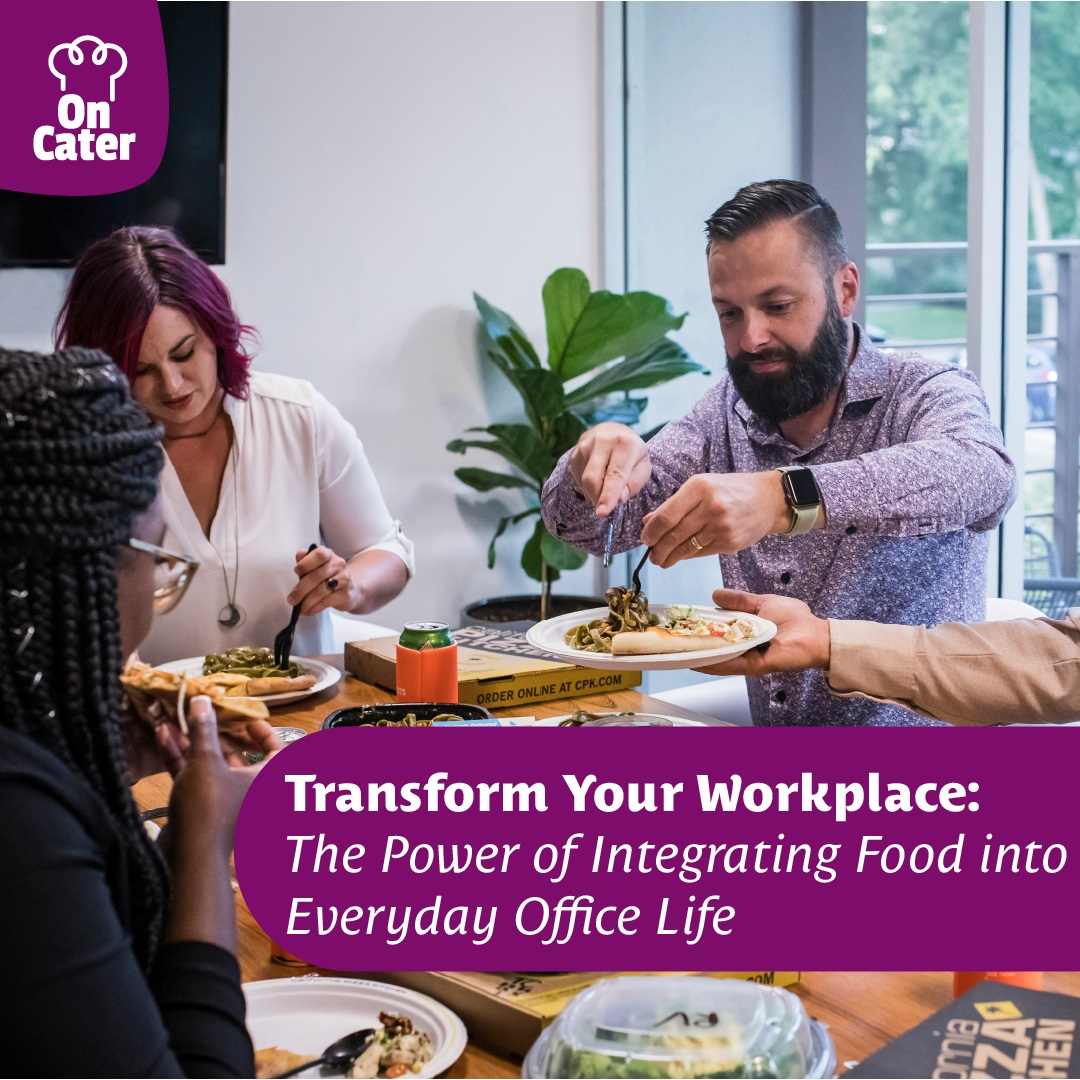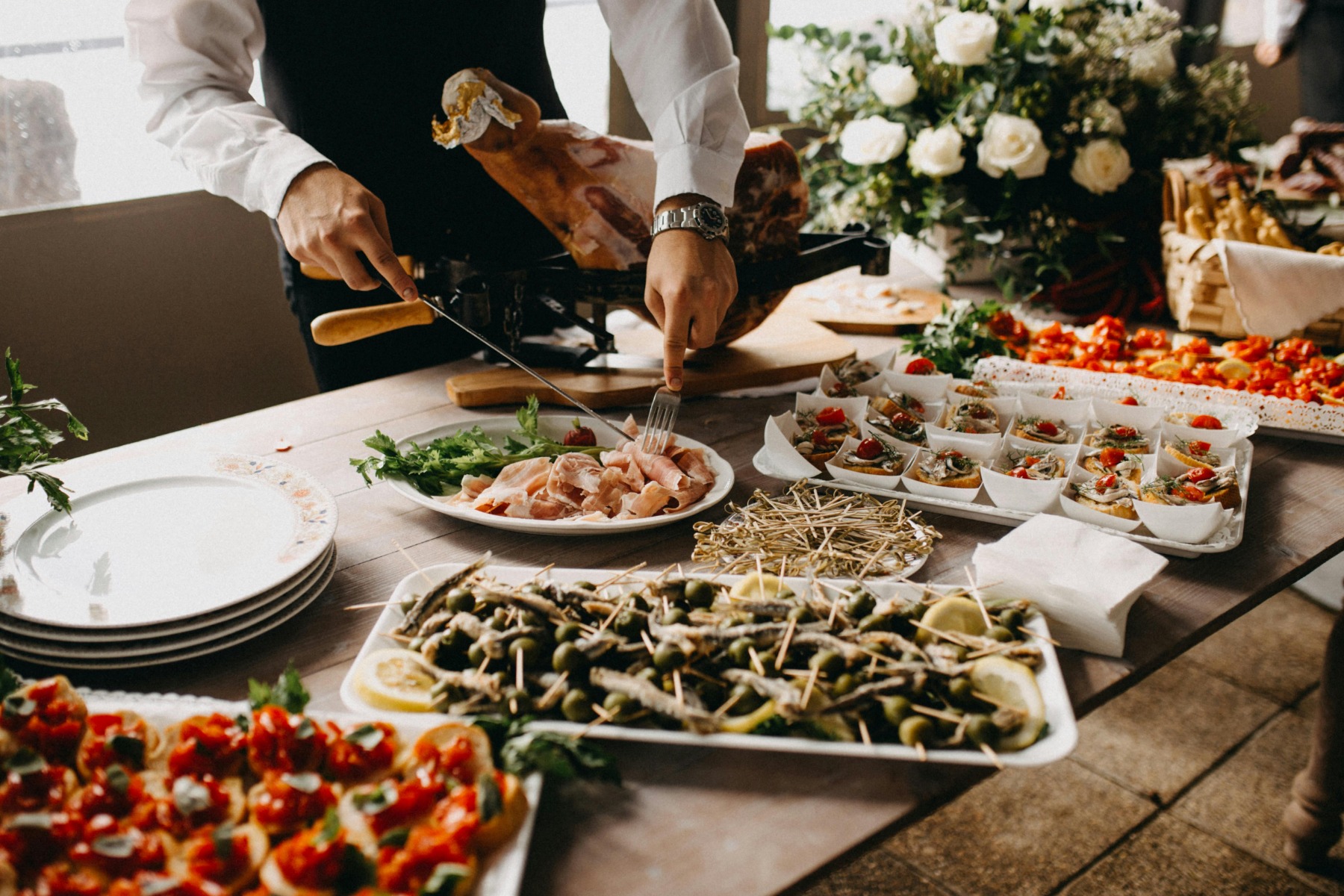Integrating food into your workplace culture can transform team dynamics and enhance collaboration. From spicing up everyday lunches with local favorites to hosting shared meals during brainstorming sessions, food fosters connection and creativity. Celebrate project milestones with catered spreads and ensure inclusivity by catering to diverse dietary needs. By making food a central part of your workday, you create an engaging atmosphere that boosts morale, productivity, and innovation. Discover how simple food integrations can lead to a stronger, more connected team!
In today’s fast-paced work environment, creating a strong company culture is essential for attracting and retaining talent. One of the simplest yet most effective ways to enhance that culture is through food. Whether it’s client meetings, team training, or special projects, integrating food into your workplace routine can transform every moment into an opportunity for connection and collaboration. Let’s explore how you can seamlessly weave food into your work culture and reap the numerous benefits that come with it.
1. Spice Up Everyday Lunches
Transform the typical lunch hour by introducing a rotating menu of local favorites. This approach not only keeps the team energized and engaged but also supports local businesses. Here are some ideas for how to implement this:
Weekly Themes: Designate specific days for different cuisines. For example, “Taco Tuesdays” could feature tacos from a local taqueria, while “Thai Thursdays” could showcase dishes from a nearby Thai restaurant. Not only does this keep lunches exciting, but it also encourages employees to explore the culinary landscape of your area.
Collaborative Ordering: Create a shared document where team members can suggest and vote on restaurants. This democratic approach gives everyone a voice in choosing meals and encourages team bonding as they discuss their favorites.
Lunch Break Rituals: Establish a ritual where the team gathers for lunch in a designated area, whether it’s a cafeteria, a lounge, or even an outdoor space. This gathering can become a cherished part of the workday, fostering casual conversations and team connections.
2. Boost Creativity with Shared Meals
Have a special project on the horizon? Foster creativity and collaboration by offering shared meals during brainstorming sessions. Here are a few strategies:
Potluck Lunches: Encourage employees to bring in their favorite dishes for potluck-style lunches. This not only diversifies the meal options but also allows employees to share a piece of their culture. For example, someone from a different background might introduce the team to traditional dishes, sparking interest and conversation.
Lunch-and-Learn Sessions: Host lunch-and-learn events where employees can present on topics of expertise while the team enjoys a meal together. This format promotes learning in a relaxed environment and encourages knowledge sharing across departments. For instance, an employee from the marketing team might discuss social media trends while everyone enjoys catered sandwiches.
Team-Building Activities: Integrate food into team-building exercises. For example, you could organize a cooking competition, such as a “Chopped”-style challenge, where teams compete to create the best dish with a set of ingredients. This fun and interactive way of incorporating food can lead to laughter, teamwork, and lasting memories.
3. Celebrate with Catered Spreads
Celebrating milestones is essential for maintaining team morale and motivation. Here’s how you can make the most of these occasions with food:
Holiday Parties: Plan festive gatherings for holidays, complete with catered meals that reflect seasonal themes. For example, a winter holiday party could feature a hot cocoa bar alongside hearty comfort foods, while a summer gathering could highlight barbecue favorites. Don’t forget to include activities like games or a photo booth to enhance the celebratory spirit.
Project Completions: When a team completes a significant project, celebrate with a catered lunch or dinner. Consider incorporating elements like a toast or recognition speeches, followed by a meal that everyone can enjoy together. This reinforces the achievement and builds camaraderie.
Milestone Celebrations: Celebrate anniversaries, promotions, or other significant milestones with special catered meals. This could range from an upscale dinner at a nice restaurant to a casual picnic in a local park, emphasizing the importance of these moments.
4. Build Connections and Improve Morale
Integrating food into your workday isn’t just about convenience—it’s about fostering connection and creating a positive work environment. Here’s how you can make food a catalyst for stronger relationships:
Employee Surveys: Conduct regular surveys to understand employees’ preferences regarding food options. This can help ensure that everyone feels included, especially those with dietary restrictions or preferences. For example, if a significant portion of your team is vegetarian, make sure there are always ample vegetarian options available.
Social Events: Organize regular social events that focus on food, such as wine and cheese tastings, dessert bars, or even cooking classes. These events provide a relaxed environment where employees can interact outside of their usual work roles, strengthening relationships and encouraging collaboration.
Office Snack Stations: Create snack stations stocked with healthy options, allowing employees to grab a bite when needed. This simple addition can help keep energy levels high throughout the day and foster a sense of community as employees share and discover new snacks together.
5. Consider Dietary Preferences and Inclusivity
When integrating food into your workplace culture, it’s crucial to consider dietary preferences and restrictions. Here are a few ways to ensure inclusivity:
Varied Menu Options: When ordering food for meetings or events, always include a range of options that cater to different dietary needs, such as gluten-free, vegan, and vegetarian choices. Make sure to label all food items clearly to help employees make informed decisions.
Inclusive Planning: Involve employees in planning food-related events. This can include setting up a planning committee or rotating responsibility for organizing meals among team members. This ensures diverse input and helps accommodate various tastes and preferences.
Cultural Celebrations: Take advantage of different cultural holidays or awareness months by celebrating with themed meals. For example, during Asian Pacific American Heritage Month, you could host a potluck featuring dishes from various Asian cultures, encouraging team members to share their traditions.
Conclusion
When the table’s full, so are the ideas! By seamlessly integrating food into your work culture, you can create an atmosphere that promotes collaboration, creativity, and connection. So, whether it’s through casual lunches, special project meals, or festive celebrations, don’t underestimate the power of good food in the workplace. It’s more than just a meal—it’s a catalyst for a thriving work environment.
Making food a central part of your workplace culture not only enhances employee satisfaction but also drives productivity and innovation. Start small by implementing one or two of these ideas, experiment with different approaches, and watch as your workplace transforms into a hub of creativity and collaboration. After all, a team that shares meals together grows stronger together, paving the way for a more connected and engaged workforce.


